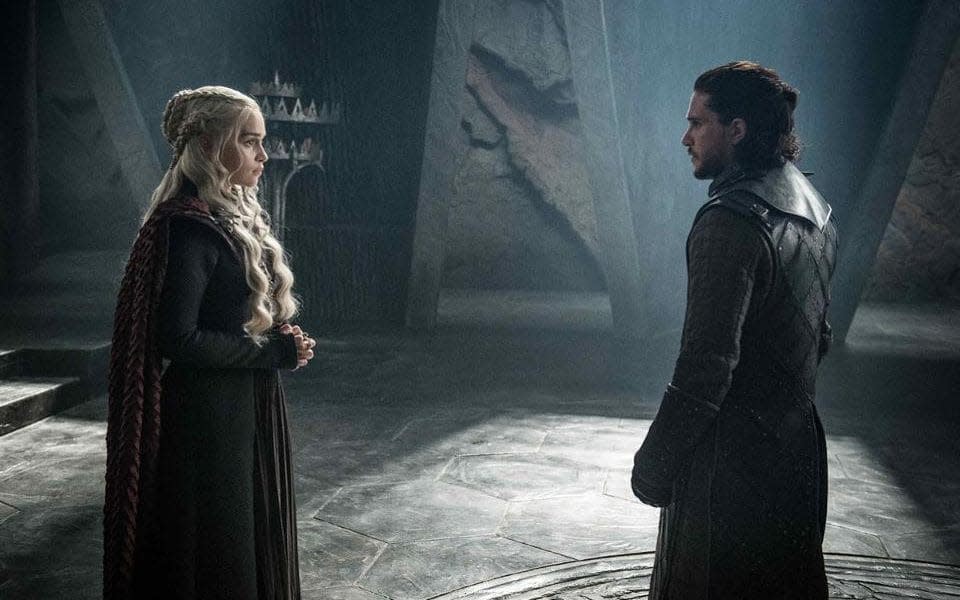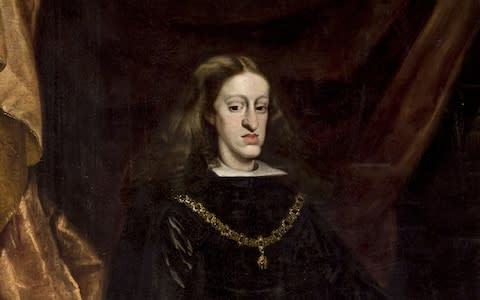Incest in Game of Thrones - why Jon and Daenerys shouldn't have children

Warning: contains spoilers
If you had to sum up Game of Thrones to a newcomer, two words would immediately spring to mind: “dragons” and “incest”. The latter has been a key plot point since the very first episode. Without Jaime and Cersei’s scandalous rutting, Bran Stark might still be climbing the walls of Winterfell, and Ned would still have a head.
At the end of season 7, Daenerys Targaryen and Jon Snow's simmering romantic tension had bubbled over into full-blown sex and, judging by their dragon-date and continual camaraderie, their relationship shows no sign of ending. There’s just one slight hitch with this burgeoning romance – and it’s not that Jon refused to bend the knee. As viewers watched Jon sneak into Daenerys’ cabin, a flashback confirmed what viewers had long suspected. Dany is actually Jon’s aunt.
With season eight kicking off by Sam telling Jon the truth about his lineage (and the Throne-deserving nephew to his aunt shortly thereafter), we’ll finally find out what the repercussions of this (mis)match will be. But there are some historical lessons that might be of interest to the pair.
Can an aunt and her nephew get married?
Short answer? No. It’s illegal. It is in UK law, anyway. (It’s also prohibited by many world religions, including Christianity, Islam and Hinduism.)

But while it may seem icky to us, avunculate marriages have taken place throughout history. In fact, they were once frequent among the royal houses of Europe. More often than not, this was to consolidate alliances between countries. Couples skirted around the religious questions with a special dispensation from the Pope.
One family who had to call on this papal permission frequently were the Hapsburgs, the Holy Roman Emperors who dominated Europe for over three hundred years. One of the reasons they clung on to this power for so long was their tendency to “keep it in the family”.
The Hapsburgs became so inbred that they had a deformity named after them. The “Hapsburg Jaw” ensured that these almighty kings struggled in the looks department.
Years of inbreeding culminated in King Charles II of Spain, the last and most deformed of the Spanish Hapsburg rulers. His prominent jaw was immortalised in portraits by Titian and Velázquez, and his tongue was said to be so big for his mouth that he would struggle to speak and drool when he managed.

Scientists have since concluded that Charles’s many symptoms, which included impotence, an oversized head and swelling all over his body, suggest that he suffered from two genetic disorders: thyroid deficiency and renal tubular acidosis. His parents were uncle and niece. Jon and Daenerys, take note.
The Hapsburgs clearly didn’t learn from these mistakes. Charles II’s sister, Margaret Theresa of Spain, was married off to their maternal uncle (and paternal first cousin once removed), the Holy Roman Emperor Leopold. Unsurprisingly, all four of Margaret and Leopold’s children suffered from the consanguineous union, with only one surviving infancy.
Overall, then, while intermarriage might make political sense, it could result in dodgy jawlines and sickly children. It would also raise a few eyebrows. Not that Tyrion seemed to mind, en route to King's Landing.
What about brother and sister?
As Cersei often states in a desperate attempt to justify her relationship with twin Jaime, the Targaryens have been marrying brother to sister for hundreds of years. Like all marriages, though, these weren’t without their problems. It’s often hinted that years of incestuous Targaryen marriages produced several mad kings – most famously, Daenerys’s father Aerys II.

George RR Martin’s latest work Fire and Blood (a prequel to A Song of Ice and Fire, on which the TV series is based) might be more than just a treat for superfans, and something from which we can learn as well.
The most famous sibling marriage in Westerosi history is Aegon the Conqueror, who had a bigamous marriage with his two sisters. Between them, the siblings conquered Westeros with their dragons. Despite some protest from religious figures, the Targaryens kept up this tradition. When a sibling wasn’t available, they tended to marry a relative that was.
Sibling incest has pretty much always been taboo in the real world. There have, however, been a few examples of royal sibling marriages. Most famous of all were those in the Ptolemaic dynasty of Egypt. Cleopatra VII (she of Shakespearean fame) was married to her younger brother Ptolemy XIII. As if that wasn’t narrowing the gene pool enough, her parents were uncle and niece as well as cousins.
Similarly, Tutankhamun’s parents were siblings, and he was married to his own half-sister Ankhesenamun. Scientists have proven from King Tut’s remains that, for all the beauty of his famous golden death-mask, he can’t have been much of a looker. He suffered from a cleft palate and club foot, congenital defects which likely came about through his incestuous ancestry.
These ancient royal marriages were often “justified” by the fact their gods married their siblings. In the Egyptians’ case, this was Osiris and Isis. The Egyptian royal family believed they were descendants of the gods and needed to keep the bloodline pure.
This pureblood argument is one that the Targaryens were especially fond of, too. The less dragon blood in other families, the less likely it was that rivals could get hold of a dragon and take the throne.
Nor do marriages between former brothers and sisters-in-law seem to be a problem in Game of Thrones. After Joffrey’s traumatic purple-infused death, the freshly widowed Margaery was hitched to Joffrey’s brother Tommen.
Compare Henry VIII, who wanted to marry his dead brother’s wife Catherine of Aragon, but had to get a special dispensation from the Pope because, according to Leviticus, “if a man shall take his brother's wife, it is an unclean thing: he hath uncovered his brother's nakedness; they shall be childless’.
Later Henry would decide that the marriage was cursed because it was incestuous – and that was why he and Catherine had failed to produce a male heir. (Funny how this epiphany happened around the same time Anne Boleyn arrived on the scene...).
All in all, history teaches us that Jon and Daenerys’s match wouldn't be too unfeasible – and, as relationships go, it would be less taboo than Jaime and Cersei’s. But spare a thought for the children. Not to mention those who might have to be ruled by the little interbred princeling.
Will Jon and Dany rule together?
Twincest-wise, it wasn't a good idea for Cersei and Jaime and it wouldn't be much better for Dany and Jon. If not, arguably, far worse.
It's not so much that the duo being related is issue number one, either, but that these related rulers-in-waiting would be trying to do so in a landscape filled with bereavement and madness. Dany doesn't want to share the Iron Throne, Jon has never wanted it altogether, and their respective followers would be far from happy to see them take it together. Especially after they were clearly in clear opposition to each other with Dany bonfired King's Landing.
You can catch up on Game of Thrones season 1-8 on NOW TV with a one week free Entertainment Pass trial.

